The razors of Kirby Beard & Co. (henceforth KBC) are eminently collectible, and they are excellent shavers as well. Some of the owners of these hard-to-find vintage razors of the 1930s and 1940s consider them to be among the finest ever made. I certainly do. These well-built French-made razors are thorough but mild, precise but forgiving, handsome in an elegant yet manly way, with good weight, heft, and balance. Most are easily recognizable by their unique scalloped head caps (although there are smooth caps as well) and a continuous solid guard bar (SGB) The handles come in five varieties that I know of: knurled (silver plated, marked “Made in France”, and by far the most common), fluted (with and without a separate tightening knob), and hexagonal (long and short versions, both marked “Made in France” :
:
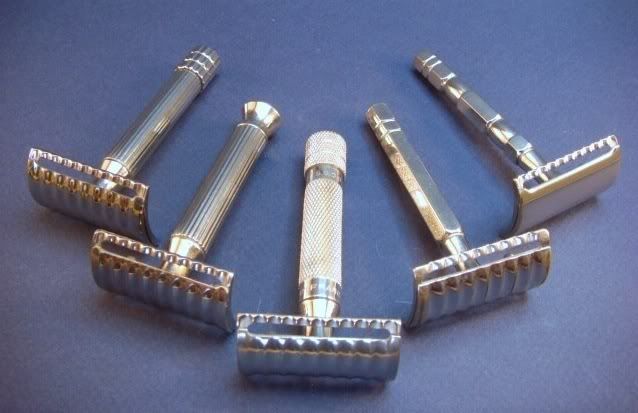
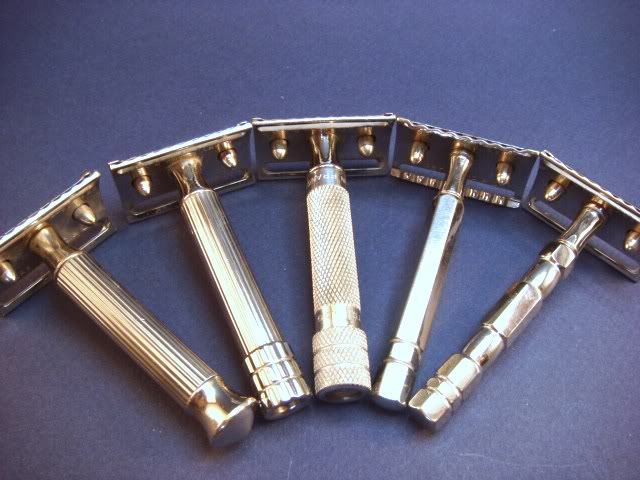
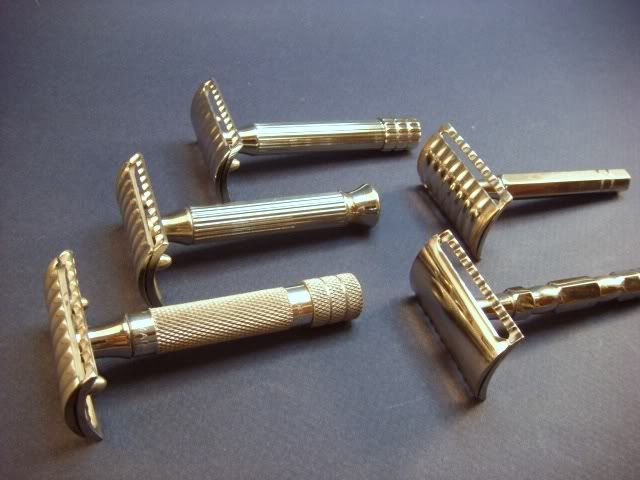
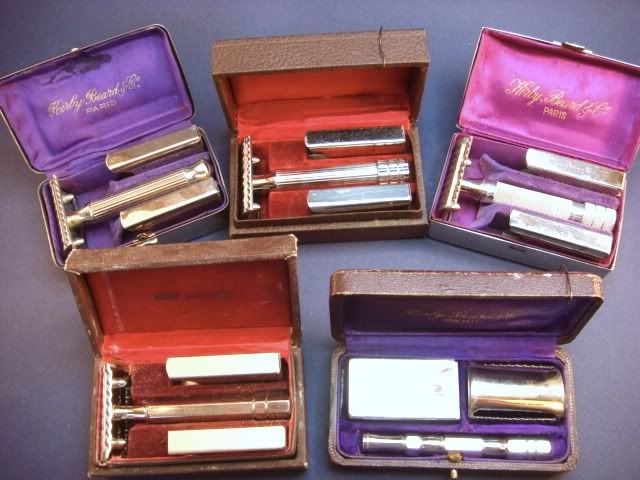
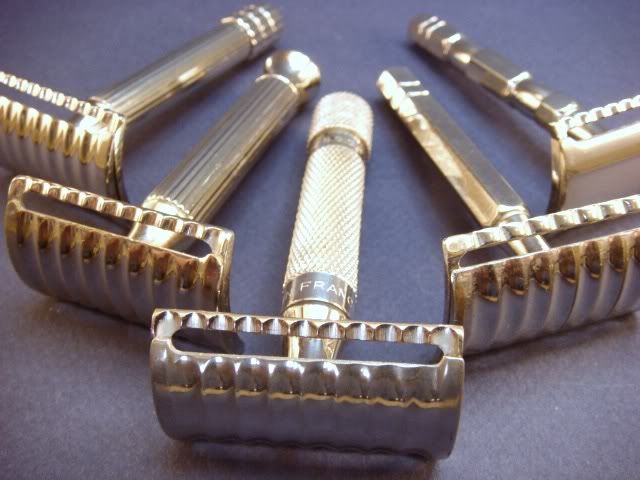
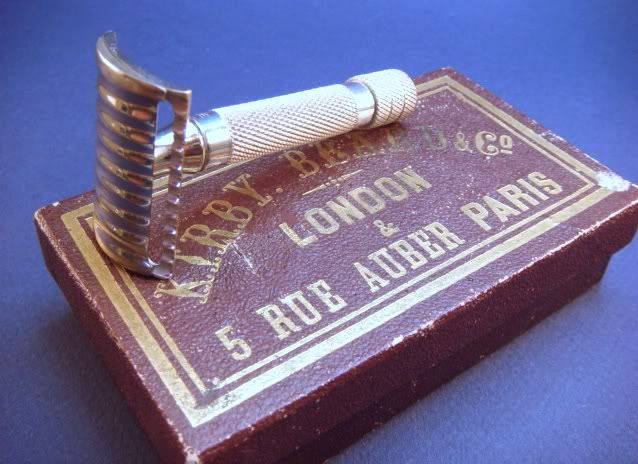
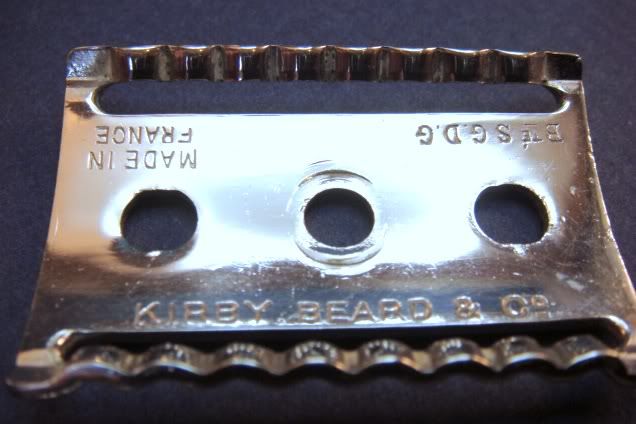
In my shaving den, my favorite KBC is held aloft by a bronze frog of the same vintage:
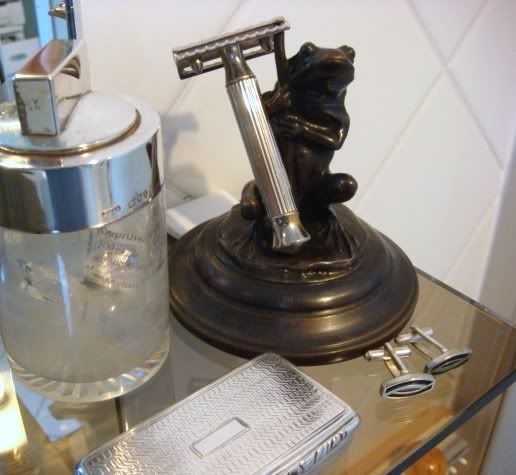
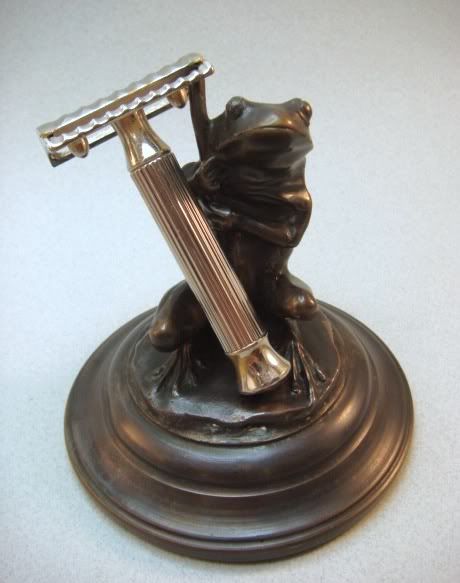
My high opinion of KBC razors emerged from a lengthy, quasi-systematic search for The Perfect Razor – a highly personal, entirely subjective quest into which I poured much treasure (and some blood). It began shortly after I converted to DE shaving about three years ago. My first timid steps towards shaving perfection were down familiar paths: Fatboy, SuperSpeed, Toggle, President, and the like. But soon I was exploring a good fraction of the entire Gillette spectrum, and a few other brands besides. I “auditioned” some thirty or forty razors before awarding my personal trophy to two relatively unknown champions: the Kirby Beard and the Leresche #77. I was so pleased when I reached the end of my quest that I built a special ivory stand for my winners, as described in a previous posting.
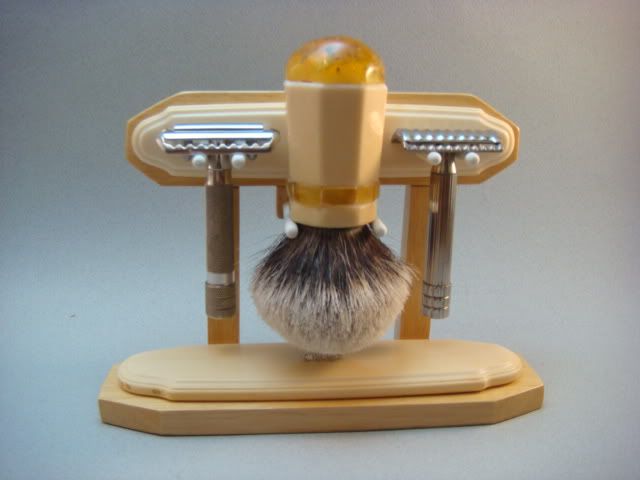
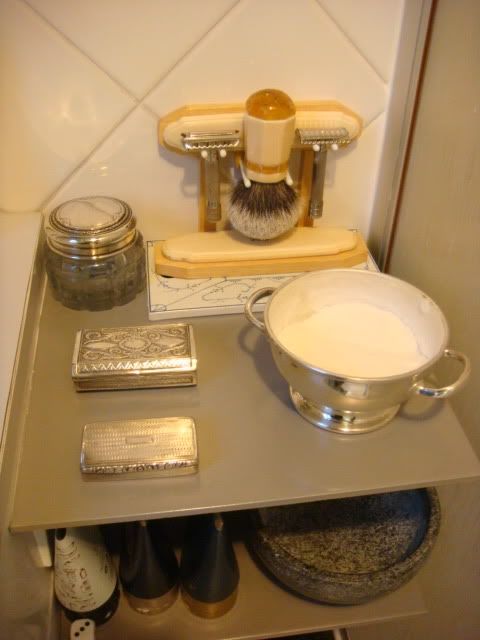
It may seem odd to some B&Bers that these two star razors were both made in France. That’s understandable - France was never a major exporter of razors, and the current wetshaving renaissance is occurring mostly in the U.S. and the U.K., where the Gillette company was king. But it must be remembered that during the Golden Age of Shaving (that is, the period from about 1920 to 1950) it was France that led the world in taste, fashion, luxury and design. During that time, and unlike today, France had heavy industries, skilled metalworkers, and, above all, a unique consumer-oriented culture whose aim was to serve, pamper and delight. Dozens of razor manufacturers flourished in those days, of which Leresche (which still exists) was the largest and the best-known. But KBC is long gone. What can be learned about this company?
Kirby Beard & Co. was a British company. Its name is not a joke (“Curb your beard, sir!”) but was adopted in 1816 when Robert Kirby and George Beard joined an already existing operation whose roots go back to 1743. KBC was one of the oldest British industrial manufacturers, specializing first in pins and needles, and then as a maker and reseller of a vast array of luxury household goods for the burgeoning upper-middle, upper, and lower-ruling classes of Europe. Indeed, KBC acquired its name one year after the battle of Waterloo, when England cemented its century-long ascendancy over all of Europe.
KBC’s proudest moment in the sun occurred when the mayor and city council of Birmingham commissioned it to produce an elaborate pincushion as a gift for the wedding of Queen Victoria’s eldest daughter to the German Prince Frederick Wilhelm (later the Kaiser of WWI fame).
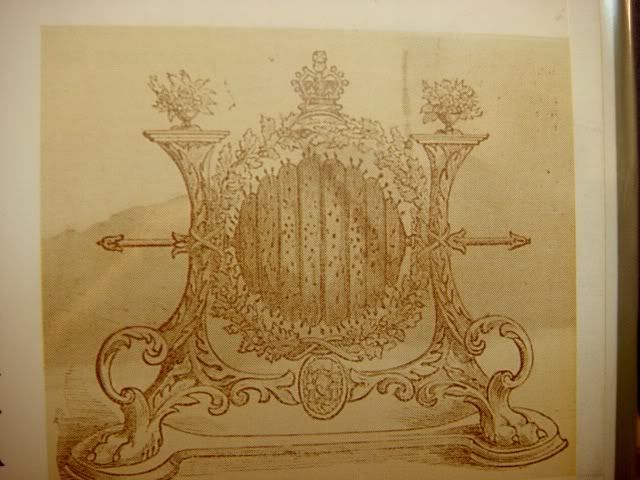
KBC was perhaps best known for the “Kirbigrip”, a bent and shaped piece of wire that was used to hold ladies’ hair in place. With the advent of “bobbed” hair in the 1920s, it became truly indispensable, known (to this day) as the bobby-pin.
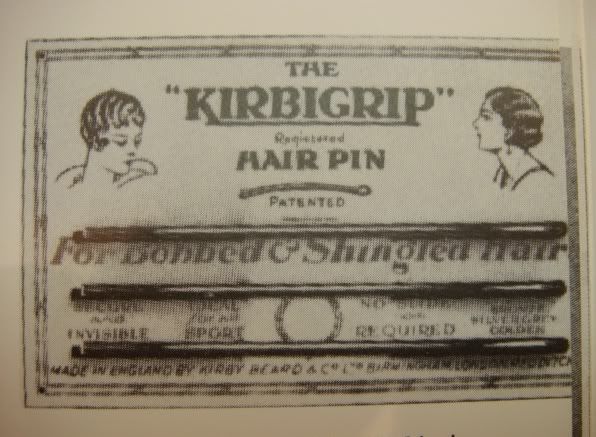
KBC established a large factory, the Ravenhurst Works, in Birmingham, but its main retail store was in Paris at 5 Rue Auber, in the very center of the world’s capital of fashion, just behind the splendid Garnier Opera House.
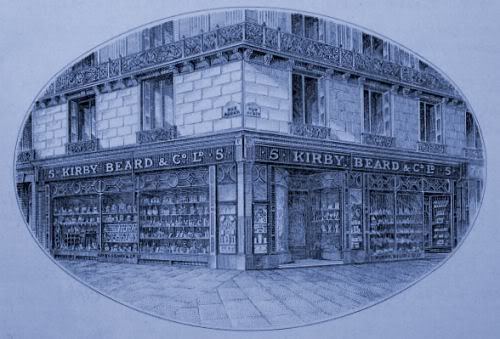
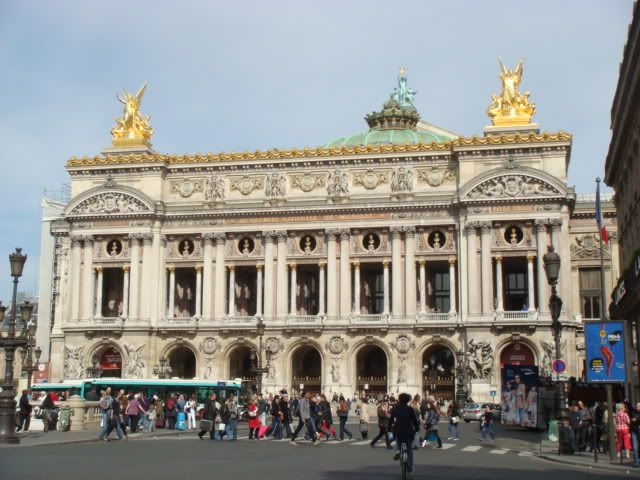
The store on Rue Auber must have been a fascinating place, full to the rafters with every possible item of domestic luxury: furniture, lamps, watches, umbrellas, pots and pans, coffee and tea sets, silver ware, pens, even fine art. In the men’s department, Gillette razors were displayed alongside KBC’s own brand.
I was able to date my KBC razors approximately by examining a full-page advertisement in the popular French magazine Illustration, dated December 1928.
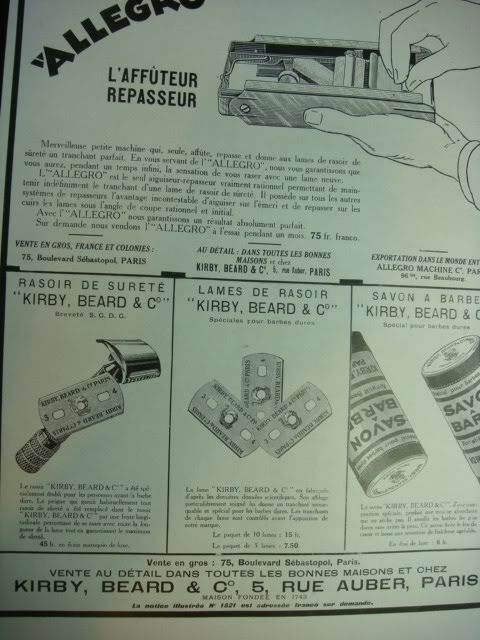
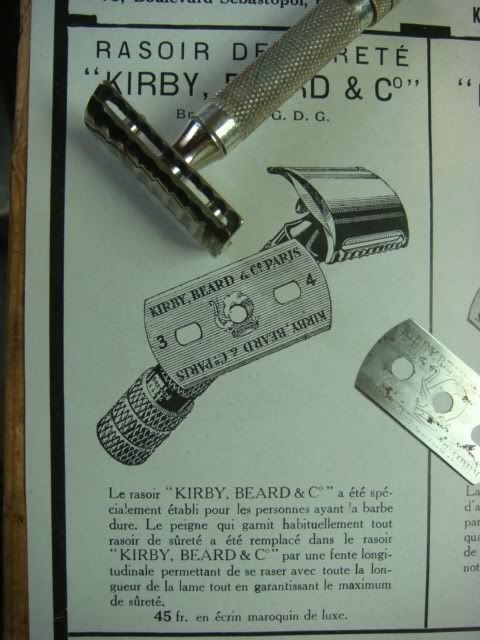
The text of the advertisement is guaranteed to catch the attention of any student of shaving history:
“The KBC razor was specially conceived for persons with tough beards. The comb that is normally present on all safety razors has, on the KBC razor, been replaced by a longitudinal slot which allows shaving with the entire length of the blade, thus ensuring a maximum of safety.”
It almost seems that KBC is taking credit for inventing the solid guard bar, a rather surprising claim to the modern collector. Conventional wisdom has it that the SGB was introduced by Gillette in its Tech models in 1938, and, yet, here we have that same advanced feature present a decade earlier! How could this be? After all, there were, arguably, only three true innovations in DE razor design: the SGB, the TTO loading system, and adjustability. The last two, IMHO, are more gimmick than innovation. The TTO feature (combined with the notched post and sealed blade dispenser) offered a measure of enhanced safety when loading a blade, but provided no protection during the equally-hazardous removal. Adjustable razors are ok for beginners, but for advanced shaving they are like a roller-furling jib on a sailboat: useable over a wide range of conditions, but, for any given wind strength – guaranteed to have a sub-optimal shape. The solid guard bar, on the other hand, is a big favorite for many (though certainly not all) shavers. Gillette adopted it in all of its post-1938 razors (albeit, and unlike KBC, always with a small supporting post midway along the bar) and never returned to K.C. Gillette’s original open comb design. In Europe, the “unsupported” SGB was a popular solution, found on many branded and “no name” razors. They tend to be mild, efficient shavers:
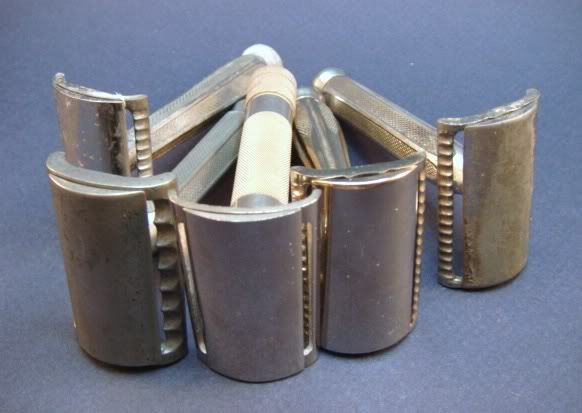
An intriguing feature of the above-quoted text is the false claim that a SGB allows use of the full length of the blade, including those portions that are blocked by the teeth of an open comb design. Any serious shaver knows that this just isn’t true: using an open comb razor is not like plowing a field, leaving behind parallel rows of unshaved skin. The argument can be dismissed as just advertising hype, but it is worth noting since it will return as the KBC story unfolds.
More precise dating can be accomplished by examining the numbers that are stamped on the head of each razor. They are all of the form 1090XX. If one suppresses the zeroes, the rest can surely be interpreted as the date of production: 19XX. Here is a summary of the eleven KBC dates that I have, or know of:
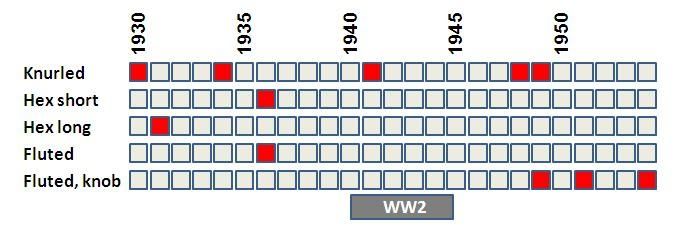
It appears that the knurled model was produced from at least 1928 (based on ad already described) into the early 1950s. It’s hard to conclude much about the other models – the statistics are just not good enough.
Kirby Beard and Company flourished throughout the 20s and 30s, although the number of razors produced and sold was surely miniscule on a global scale. But the company's luck ran out with the outbreak of World War II. Just as it, along with most British manufacturers, was converting to military production, disaster struck on the night of December 4, 1940, when the Ravenhurst Works were devastated by German bombers.
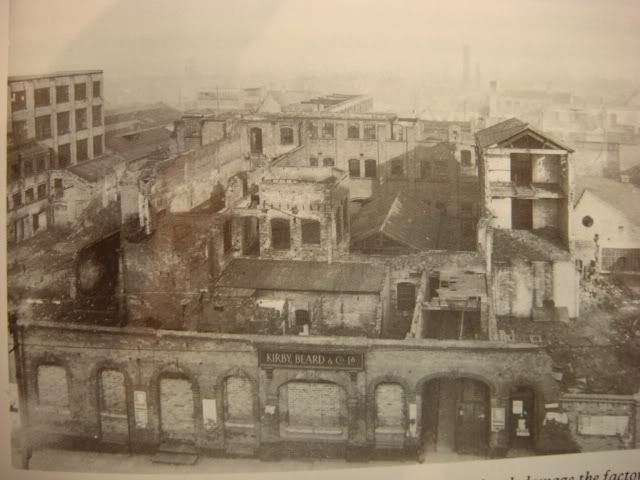
Three weeks later, the company’s headquarters in London, and a warehouse, were heavily damaged as well. KBC never recovered. After the war, the factory was partially rebuilt, but a combination of poor investment decisions and a weak post-war market drove the company under, until it was bought out, in 1957, by its long-time competitor in the pins-and-needles business, Goodman, which, in turn was bought by Newey Company and, finally, Prym, the oldest German family-owned company. Today, both the Birmingham and Paris locations are scenes of post-industrial desolation: an office supply depot and a bank, respectively.
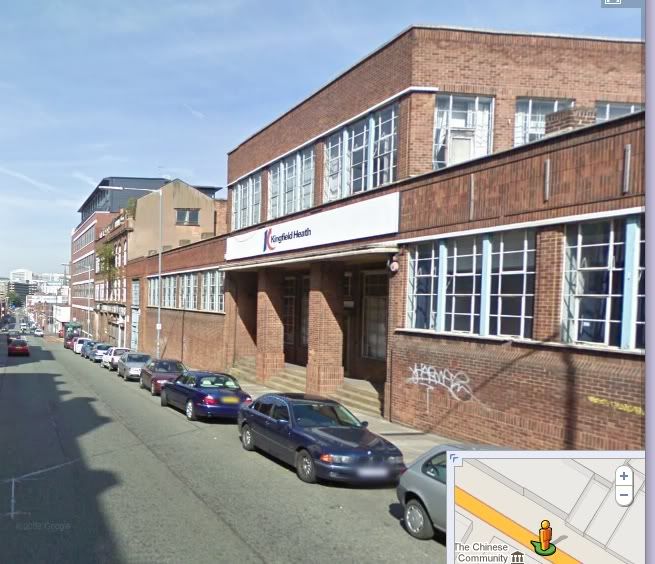
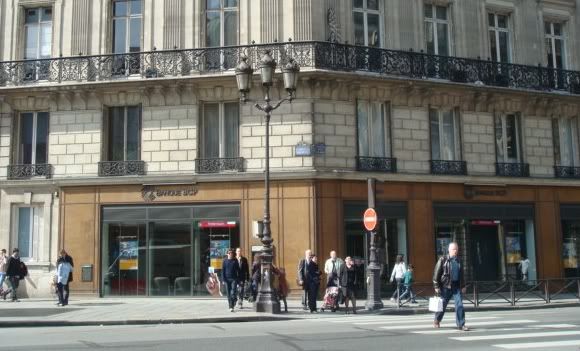
Still, the mystery of the KBC razors lives on. Stated (or, perhaps, overstated) in the starkest terms, it is this:
How is it possible that a company whose main business was the manufacturing of pins and needles, plus the selling of hundreds of miscellaneous domestic items, managed to design and produce some of the most beautiful, most innovative, best-shaving DE razors of all time?
I must admit that this mystery preoccupied me until I almost despaired of ever solving it, realising, as I did, that the KBC corporate trail had gone cold in England a half-century ago. Finally, the solution arrived and, as often happens, it came while I was shaving. I remember the moment well. I had let my eyes wander from the mirror to the stand where my knurled Kirby and Leresche razors were hanging side by side. Then it dawned on me: surely these two razors, acquired years apart, had nearly identical handles! As my gaze darted back to the mirror, it met that of a man in whose eyes enlightenment has already taken hold. I had it: KBC razors must have been designed and made in France by Leresche, a company with unparalled, unquestionable expertise and experience in all the relevant areas.
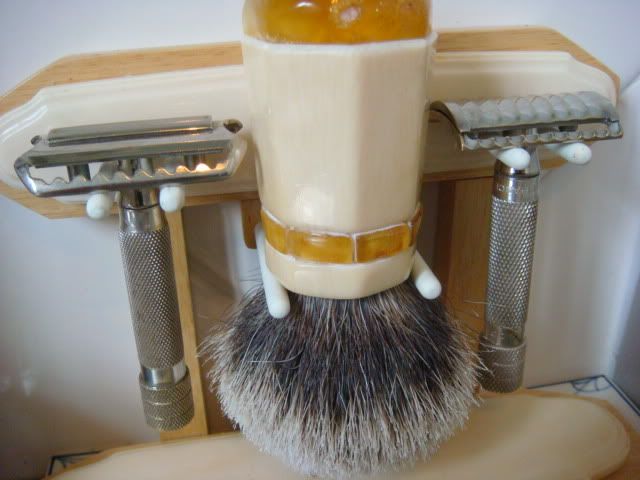
Right away, I rummaged in my collection of Leresche razors, and indeed found one with a handle that is identical to that of the knurled Kirby!
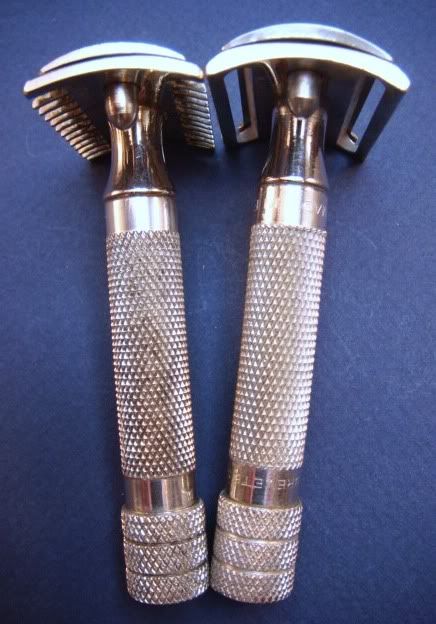
So now is the time to tell the story of Leresche (pronouced ”Luh-resh”), makers of some of the world’s finest open comb razors and, as their crowning achievement, the unique #77 with its solid guard bar.
Of Swiss origins, the Leresche family installed itself in the beautiful Yonne river valley, some 120 kilometres south of Paris. In 1894, the patriarche Jules Leresche (1855-1919) established a factory in the town of Saint Julien du Sault. There, taking advantage of the available hydraulic power, straight razors were produced by some 30 workers. Success was not long in coming, and the company began elaborating various innovative designs, including single-edge razors and blades of various types. The success of K.C. Gillette’s invention gives a further boost to the company. In fact, it manufactured thin, disposable, Gillette-type blades even before the French patent expired in 1918. How this happened is not exactly clear, since Gillette was in the habit of vigorously defending its intellectual property rights all over the world. Perhaps is was simply because, during WWI, the authorities had other concerns. It is worth noting that Gillette later contracted the making of its own branded blades by Leresche, presumably before opening its own huge factory in Annecy.
Leresche safety razors come in all shapes, finishes and sizes. My own modest collection is focused on the final few decades of production:
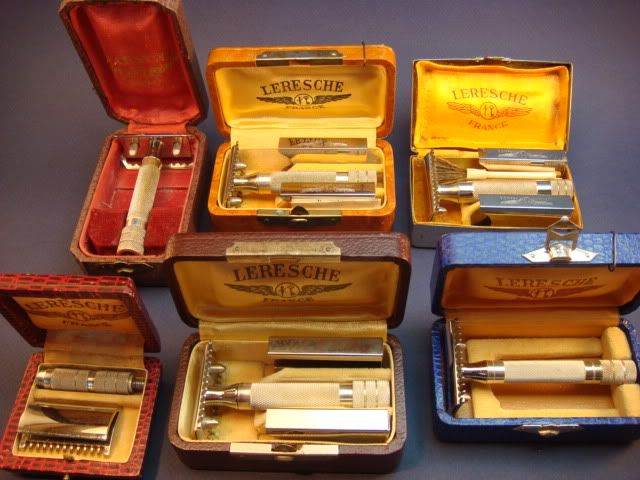
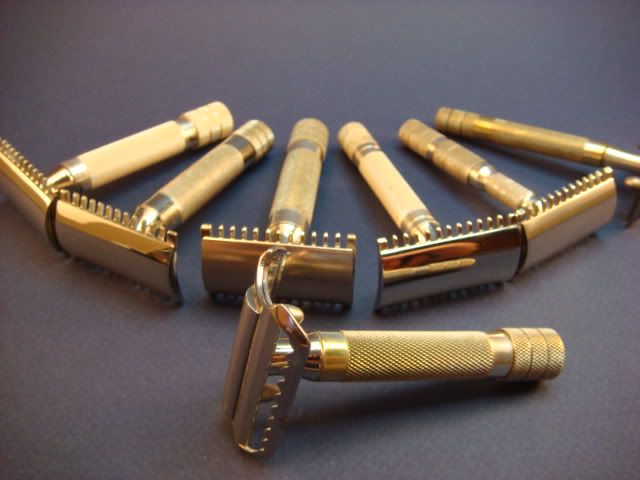
Most of these razors are plated with silver. They are outstanding, albeit mild, shavers. Before returning to my very favorite model #77, I would especially single out the the #51, a very special shaving implement, weighing a full 79 grammes (same as a Fatboy) but with an even thicker, more substantial handle (1.23 centimeters versus 1.16). For lovers of open-comb razors, this is the one I would recommend.
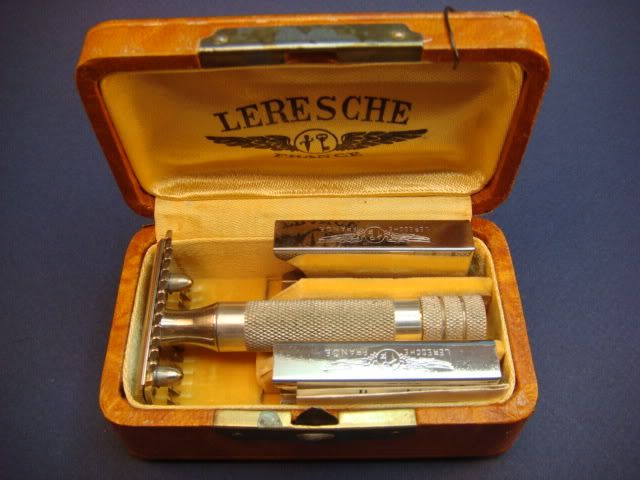
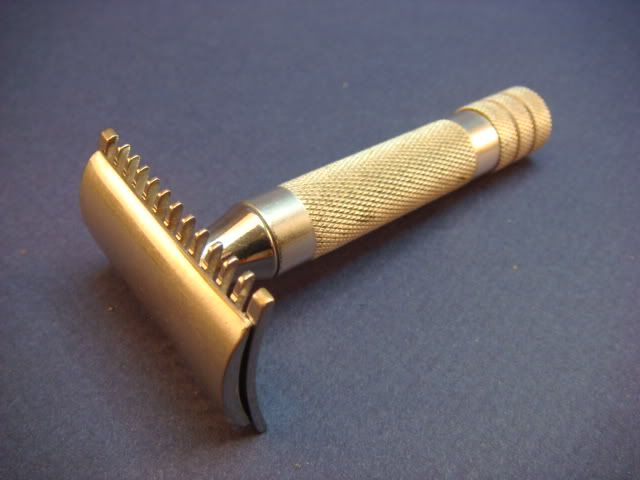
The Leresche company ceased making razors in the 1970s. These days, they are a manufacturer of industrial blades of all kinds, specialising in ones that are used for cutting cleanly through fiber optic cables.
Seeking to confirm my hunch about the link to Kirby Beard and Company, I cold-called the corporate office and, somewhat unexpectedly, was soon describing my quest to the CEO, Monsieur Xavier Marquis. He heard me out patiently and, with great courtesy, referred me to a gentlemen who had been commissioned, not long ago, to publish a history of the company. I lost no time in contacting Monsieur Roger Perrayon who, as it turns out, is one of France’s best-known collectors of vintage razor blades. He informed me that the Leresche company had, for many years, been a manufacturer of both razors and blades for many different brands, including Gillette. They certainly did make Kirby Beard blades, he told me, but as to the razors, he wasn’t sure.
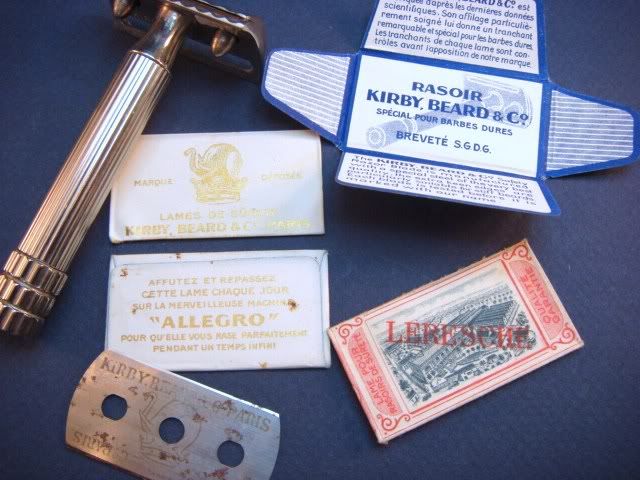
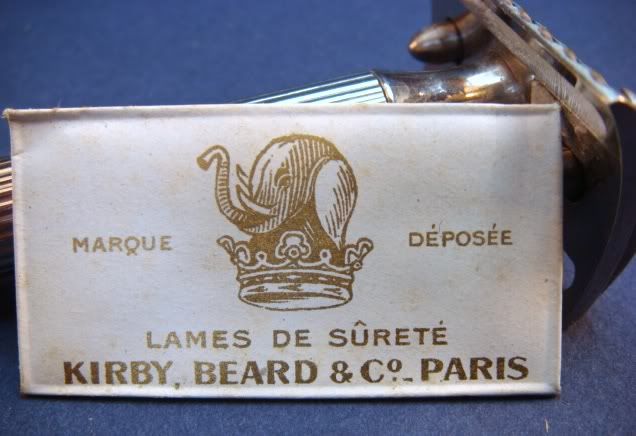
But he did refer me to another collector and expert, Monsieur Pierre Aragones who, in turn, was able to provide me with much useful information, including pictures of two of the strangest DE razors that I have ever seen – both, he assured me, made by Leresche for Kirby Beard and Apolllo:
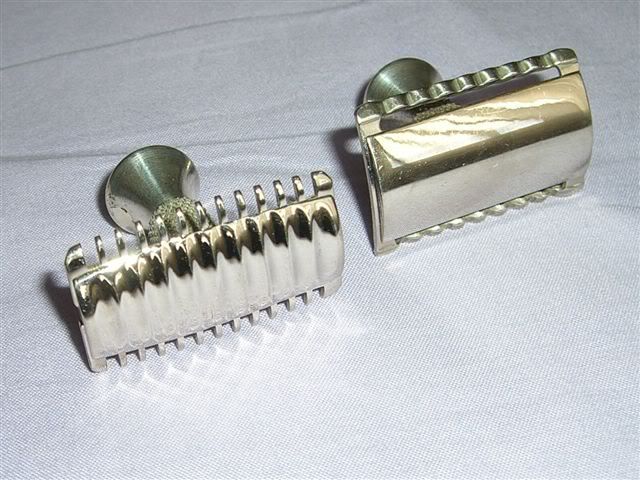
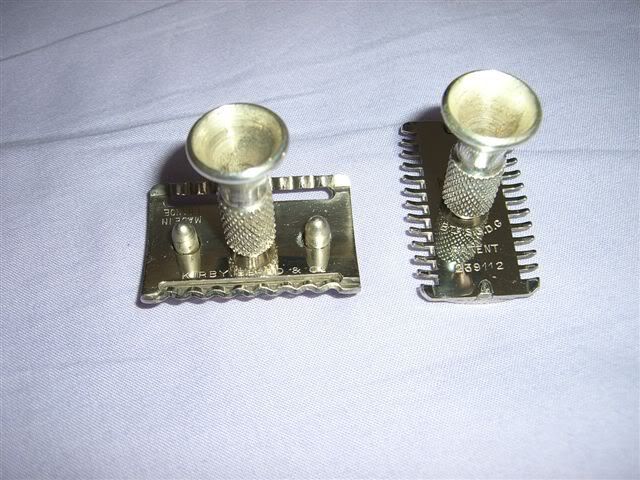
Monsieur Perrayon was kind enough to send me a copy of the 1935 patent application for the Leresche design which was to be marketed as the #77. Its unique feature (not used, to my knowledge, in any other razor) is the guard bar that is incorporated into the upper cap of the head.
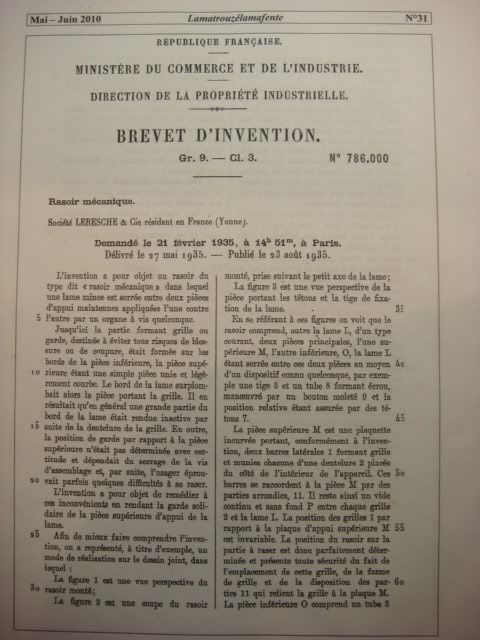
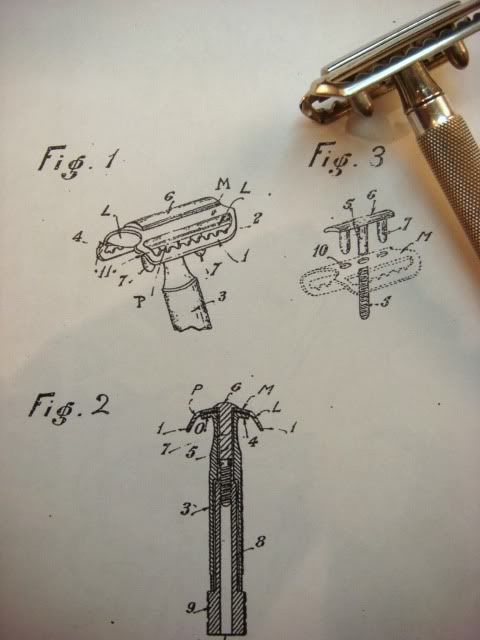
With its silver-plated handle and weighing in at 69 grammes, this is a serious implement that delivers a terrific, supremely comfortable shave. The extra width of the head (28 mm, as opposed to the more typical 25 mm found in a Tech or SS) makes it almost impossible to get the blade angle wrong, although, granted, it is sub-optimal for getting into the tight spots. If the #77 does have a serious flaw, it is its essential scarcity. In three years, I have only ever seen it for sale on three occasions.
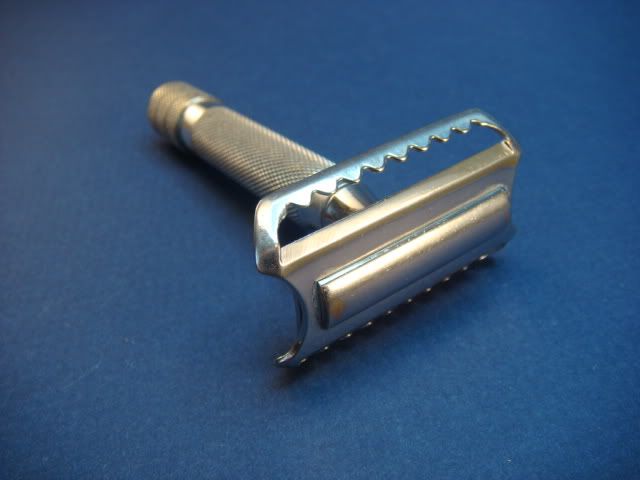
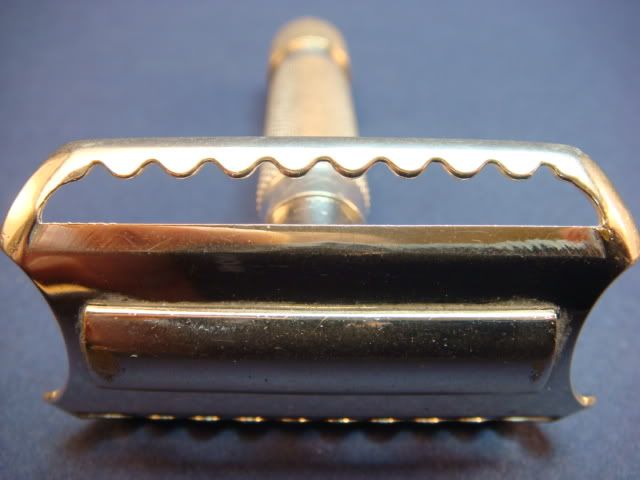
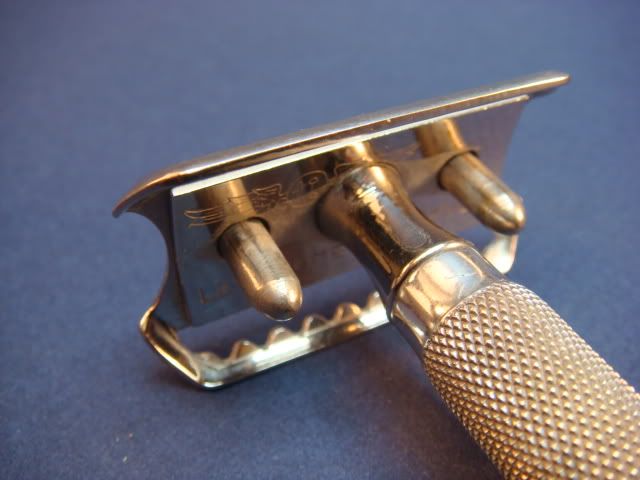
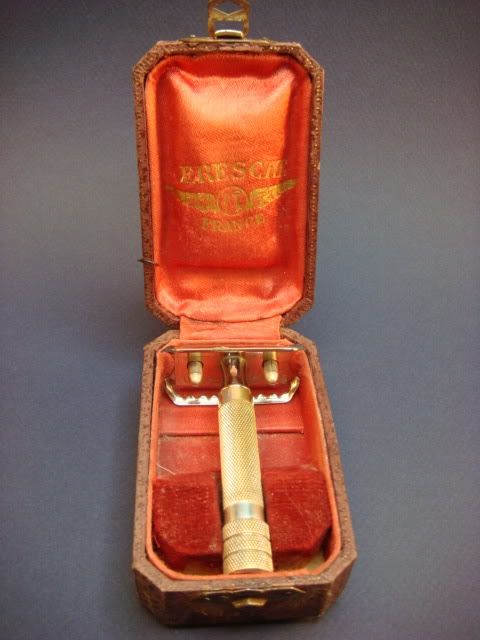
The claims from the application are worth quoting:
“Until now, the grill or guard, intended for avoiding any risk of wounds or cuts, was situated on the edges of the lower component, the upper one being a simple one-piece element, slightly curved. The edge of the blade was thus located above the lower piece that incorporated the grill. The result was, in general, that a large portion of the blade edge was rendered inactive due to the presence of the teeth of the grill….This invention overcomes the problem by making the guard an integral part of the upper component that grips the blade.”
Further on in the text, and referring to the shape of the inner edge of the guard bar, the patent application states:
“The shape of the teeth can be of any form under the terms of this application, or they can even be done away with altogether, but the inventor has found that that the sinusoidal shape shown in the drawing gives a particularly favorable result…”
Thus we find the same phony claim that we say in the earlier KBC advertisement – further confirming the hypothesized link between the companies.
So, has the great KBC mystery been solved at last? Well - maybe, maybe not. I feel reasonably certain that the knurled KBC razor is a Leresche product, but as for the other models (fluted and hexagonal), I'm not so sure. Furthermore, I realise that I have no definitive proof that Leresche designers actually invented the solid guard bar. I have come across many SGB razors that could be of similar vintage, but dating them all is surely impossible. They did not incorporate that feature into their own branded models until just before WWII, and then in an entirely atypical way.
As my story comes to an end, I have a couple of requests for readers that may still be with me:
If you have a KBC razor, please describe it, and please provide the serial number that should be stamped on the head.
If you can shed some light on the origin of the solid guard bar, please do so, keeping in mind that the earliest evidence that I have found for this feature on KBC razors goes back to 1928.







In my shaving den, my favorite KBC is held aloft by a bronze frog of the same vintage:


My high opinion of KBC razors emerged from a lengthy, quasi-systematic search for The Perfect Razor – a highly personal, entirely subjective quest into which I poured much treasure (and some blood). It began shortly after I converted to DE shaving about three years ago. My first timid steps towards shaving perfection were down familiar paths: Fatboy, SuperSpeed, Toggle, President, and the like. But soon I was exploring a good fraction of the entire Gillette spectrum, and a few other brands besides. I “auditioned” some thirty or forty razors before awarding my personal trophy to two relatively unknown champions: the Kirby Beard and the Leresche #77. I was so pleased when I reached the end of my quest that I built a special ivory stand for my winners, as described in a previous posting.


It may seem odd to some B&Bers that these two star razors were both made in France. That’s understandable - France was never a major exporter of razors, and the current wetshaving renaissance is occurring mostly in the U.S. and the U.K., where the Gillette company was king. But it must be remembered that during the Golden Age of Shaving (that is, the period from about 1920 to 1950) it was France that led the world in taste, fashion, luxury and design. During that time, and unlike today, France had heavy industries, skilled metalworkers, and, above all, a unique consumer-oriented culture whose aim was to serve, pamper and delight. Dozens of razor manufacturers flourished in those days, of which Leresche (which still exists) was the largest and the best-known. But KBC is long gone. What can be learned about this company?
Kirby Beard & Co. was a British company. Its name is not a joke (“Curb your beard, sir!”) but was adopted in 1816 when Robert Kirby and George Beard joined an already existing operation whose roots go back to 1743. KBC was one of the oldest British industrial manufacturers, specializing first in pins and needles, and then as a maker and reseller of a vast array of luxury household goods for the burgeoning upper-middle, upper, and lower-ruling classes of Europe. Indeed, KBC acquired its name one year after the battle of Waterloo, when England cemented its century-long ascendancy over all of Europe.
KBC’s proudest moment in the sun occurred when the mayor and city council of Birmingham commissioned it to produce an elaborate pincushion as a gift for the wedding of Queen Victoria’s eldest daughter to the German Prince Frederick Wilhelm (later the Kaiser of WWI fame).

KBC was perhaps best known for the “Kirbigrip”, a bent and shaped piece of wire that was used to hold ladies’ hair in place. With the advent of “bobbed” hair in the 1920s, it became truly indispensable, known (to this day) as the bobby-pin.

KBC established a large factory, the Ravenhurst Works, in Birmingham, but its main retail store was in Paris at 5 Rue Auber, in the very center of the world’s capital of fashion, just behind the splendid Garnier Opera House.


The store on Rue Auber must have been a fascinating place, full to the rafters with every possible item of domestic luxury: furniture, lamps, watches, umbrellas, pots and pans, coffee and tea sets, silver ware, pens, even fine art. In the men’s department, Gillette razors were displayed alongside KBC’s own brand.
I was able to date my KBC razors approximately by examining a full-page advertisement in the popular French magazine Illustration, dated December 1928.


The text of the advertisement is guaranteed to catch the attention of any student of shaving history:
“The KBC razor was specially conceived for persons with tough beards. The comb that is normally present on all safety razors has, on the KBC razor, been replaced by a longitudinal slot which allows shaving with the entire length of the blade, thus ensuring a maximum of safety.”
It almost seems that KBC is taking credit for inventing the solid guard bar, a rather surprising claim to the modern collector. Conventional wisdom has it that the SGB was introduced by Gillette in its Tech models in 1938, and, yet, here we have that same advanced feature present a decade earlier! How could this be? After all, there were, arguably, only three true innovations in DE razor design: the SGB, the TTO loading system, and adjustability. The last two, IMHO, are more gimmick than innovation. The TTO feature (combined with the notched post and sealed blade dispenser) offered a measure of enhanced safety when loading a blade, but provided no protection during the equally-hazardous removal. Adjustable razors are ok for beginners, but for advanced shaving they are like a roller-furling jib on a sailboat: useable over a wide range of conditions, but, for any given wind strength – guaranteed to have a sub-optimal shape. The solid guard bar, on the other hand, is a big favorite for many (though certainly not all) shavers. Gillette adopted it in all of its post-1938 razors (albeit, and unlike KBC, always with a small supporting post midway along the bar) and never returned to K.C. Gillette’s original open comb design. In Europe, the “unsupported” SGB was a popular solution, found on many branded and “no name” razors. They tend to be mild, efficient shavers:

An intriguing feature of the above-quoted text is the false claim that a SGB allows use of the full length of the blade, including those portions that are blocked by the teeth of an open comb design. Any serious shaver knows that this just isn’t true: using an open comb razor is not like plowing a field, leaving behind parallel rows of unshaved skin. The argument can be dismissed as just advertising hype, but it is worth noting since it will return as the KBC story unfolds.
More precise dating can be accomplished by examining the numbers that are stamped on the head of each razor. They are all of the form 1090XX. If one suppresses the zeroes, the rest can surely be interpreted as the date of production: 19XX. Here is a summary of the eleven KBC dates that I have, or know of:

It appears that the knurled model was produced from at least 1928 (based on ad already described) into the early 1950s. It’s hard to conclude much about the other models – the statistics are just not good enough.
Kirby Beard and Company flourished throughout the 20s and 30s, although the number of razors produced and sold was surely miniscule on a global scale. But the company's luck ran out with the outbreak of World War II. Just as it, along with most British manufacturers, was converting to military production, disaster struck on the night of December 4, 1940, when the Ravenhurst Works were devastated by German bombers.

Three weeks later, the company’s headquarters in London, and a warehouse, were heavily damaged as well. KBC never recovered. After the war, the factory was partially rebuilt, but a combination of poor investment decisions and a weak post-war market drove the company under, until it was bought out, in 1957, by its long-time competitor in the pins-and-needles business, Goodman, which, in turn was bought by Newey Company and, finally, Prym, the oldest German family-owned company. Today, both the Birmingham and Paris locations are scenes of post-industrial desolation: an office supply depot and a bank, respectively.


Still, the mystery of the KBC razors lives on. Stated (or, perhaps, overstated) in the starkest terms, it is this:
How is it possible that a company whose main business was the manufacturing of pins and needles, plus the selling of hundreds of miscellaneous domestic items, managed to design and produce some of the most beautiful, most innovative, best-shaving DE razors of all time?
I must admit that this mystery preoccupied me until I almost despaired of ever solving it, realising, as I did, that the KBC corporate trail had gone cold in England a half-century ago. Finally, the solution arrived and, as often happens, it came while I was shaving. I remember the moment well. I had let my eyes wander from the mirror to the stand where my knurled Kirby and Leresche razors were hanging side by side. Then it dawned on me: surely these two razors, acquired years apart, had nearly identical handles! As my gaze darted back to the mirror, it met that of a man in whose eyes enlightenment has already taken hold. I had it: KBC razors must have been designed and made in France by Leresche, a company with unparalled, unquestionable expertise and experience in all the relevant areas.

Right away, I rummaged in my collection of Leresche razors, and indeed found one with a handle that is identical to that of the knurled Kirby!

So now is the time to tell the story of Leresche (pronouced ”Luh-resh”), makers of some of the world’s finest open comb razors and, as their crowning achievement, the unique #77 with its solid guard bar.
Of Swiss origins, the Leresche family installed itself in the beautiful Yonne river valley, some 120 kilometres south of Paris. In 1894, the patriarche Jules Leresche (1855-1919) established a factory in the town of Saint Julien du Sault. There, taking advantage of the available hydraulic power, straight razors were produced by some 30 workers. Success was not long in coming, and the company began elaborating various innovative designs, including single-edge razors and blades of various types. The success of K.C. Gillette’s invention gives a further boost to the company. In fact, it manufactured thin, disposable, Gillette-type blades even before the French patent expired in 1918. How this happened is not exactly clear, since Gillette was in the habit of vigorously defending its intellectual property rights all over the world. Perhaps is was simply because, during WWI, the authorities had other concerns. It is worth noting that Gillette later contracted the making of its own branded blades by Leresche, presumably before opening its own huge factory in Annecy.
Leresche safety razors come in all shapes, finishes and sizes. My own modest collection is focused on the final few decades of production:


Most of these razors are plated with silver. They are outstanding, albeit mild, shavers. Before returning to my very favorite model #77, I would especially single out the the #51, a very special shaving implement, weighing a full 79 grammes (same as a Fatboy) but with an even thicker, more substantial handle (1.23 centimeters versus 1.16). For lovers of open-comb razors, this is the one I would recommend.


The Leresche company ceased making razors in the 1970s. These days, they are a manufacturer of industrial blades of all kinds, specialising in ones that are used for cutting cleanly through fiber optic cables.
Seeking to confirm my hunch about the link to Kirby Beard and Company, I cold-called the corporate office and, somewhat unexpectedly, was soon describing my quest to the CEO, Monsieur Xavier Marquis. He heard me out patiently and, with great courtesy, referred me to a gentlemen who had been commissioned, not long ago, to publish a history of the company. I lost no time in contacting Monsieur Roger Perrayon who, as it turns out, is one of France’s best-known collectors of vintage razor blades. He informed me that the Leresche company had, for many years, been a manufacturer of both razors and blades for many different brands, including Gillette. They certainly did make Kirby Beard blades, he told me, but as to the razors, he wasn’t sure.


But he did refer me to another collector and expert, Monsieur Pierre Aragones who, in turn, was able to provide me with much useful information, including pictures of two of the strangest DE razors that I have ever seen – both, he assured me, made by Leresche for Kirby Beard and Apolllo:


Monsieur Perrayon was kind enough to send me a copy of the 1935 patent application for the Leresche design which was to be marketed as the #77. Its unique feature (not used, to my knowledge, in any other razor) is the guard bar that is incorporated into the upper cap of the head.


With its silver-plated handle and weighing in at 69 grammes, this is a serious implement that delivers a terrific, supremely comfortable shave. The extra width of the head (28 mm, as opposed to the more typical 25 mm found in a Tech or SS) makes it almost impossible to get the blade angle wrong, although, granted, it is sub-optimal for getting into the tight spots. If the #77 does have a serious flaw, it is its essential scarcity. In three years, I have only ever seen it for sale on three occasions.




The claims from the application are worth quoting:
“Until now, the grill or guard, intended for avoiding any risk of wounds or cuts, was situated on the edges of the lower component, the upper one being a simple one-piece element, slightly curved. The edge of the blade was thus located above the lower piece that incorporated the grill. The result was, in general, that a large portion of the blade edge was rendered inactive due to the presence of the teeth of the grill….This invention overcomes the problem by making the guard an integral part of the upper component that grips the blade.”
Further on in the text, and referring to the shape of the inner edge of the guard bar, the patent application states:
“The shape of the teeth can be of any form under the terms of this application, or they can even be done away with altogether, but the inventor has found that that the sinusoidal shape shown in the drawing gives a particularly favorable result…”
Thus we find the same phony claim that we say in the earlier KBC advertisement – further confirming the hypothesized link between the companies.
So, has the great KBC mystery been solved at last? Well - maybe, maybe not. I feel reasonably certain that the knurled KBC razor is a Leresche product, but as for the other models (fluted and hexagonal), I'm not so sure. Furthermore, I realise that I have no definitive proof that Leresche designers actually invented the solid guard bar. I have come across many SGB razors that could be of similar vintage, but dating them all is surely impossible. They did not incorporate that feature into their own branded models until just before WWII, and then in an entirely atypical way.
As my story comes to an end, I have a couple of requests for readers that may still be with me:
If you have a KBC razor, please describe it, and please provide the serial number that should be stamped on the head.
If you can shed some light on the origin of the solid guard bar, please do so, keeping in mind that the earliest evidence that I have found for this feature on KBC razors goes back to 1928.
Last edited:





